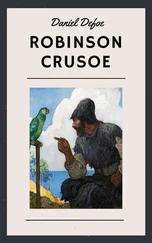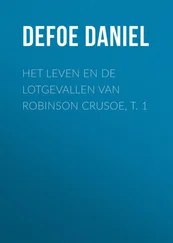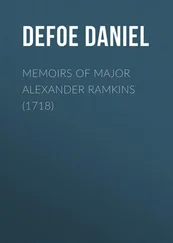Daniel Defoe - Memoirs of a Cavalier
Здесь есть возможность читать онлайн «Daniel Defoe - Memoirs of a Cavalier» — ознакомительный отрывок электронной книги совершенно бесплатно, а после прочтения отрывка купить полную версию. В некоторых случаях можно слушать аудио, скачать через торрент в формате fb2 и присутствует краткое содержание. Жанр: foreign_antique, foreign_prose, на английском языке. Описание произведения, (предисловие) а так же отзывы посетителей доступны на портале библиотеки ЛибКат.
- Название:Memoirs of a Cavalier
- Автор:
- Жанр:
- Год:неизвестен
- ISBN:нет данных
- Рейтинг книги:5 / 5. Голосов: 1
-
Избранное:Добавить в избранное
- Отзывы:
-
Ваша оценка:
- 100
- 1
- 2
- 3
- 4
- 5
Memoirs of a Cavalier: краткое содержание, описание и аннотация
Предлагаем к чтению аннотацию, описание, краткое содержание или предисловие (зависит от того, что написал сам автор книги «Memoirs of a Cavalier»). Если вы не нашли необходимую информацию о книге — напишите в комментариях, мы постараемся отыскать её.
Memoirs of a Cavalier — читать онлайн ознакомительный отрывок
Ниже представлен текст книги, разбитый по страницам. Система сохранения места последней прочитанной страницы, позволяет с удобством читать онлайн бесплатно книгу «Memoirs of a Cavalier», без необходимости каждый раз заново искать на чём Вы остановились. Поставьте закладку, и сможете в любой момент перейти на страницу, на которой закончили чтение.
Интервал:
Закладка:
Daniel Defoe
Memoirs of a Cavalier A Military Journal of the Wars in Germany, and the Wars in England.From the Year 1632 to the Year 1648. From the Year 1632 to the Year 1648
INTRODUCTION
Daniel Defoe is, perhaps, best known to us as the author of Robinson Crusoe , a book which has been the delight of generations of boys and girls ever since the beginning of the eighteenth century. For it was then that Defoe lived and wrote, being one of the new school of prose writers which grew up at that time and which gave England new forms of literature almost unknown to an earlier age. Defoe was a vigorous pamphleteer, writing first on the Whig side and later for the Tories in the reigns of William III and Anne. He did much to foster the growth of the newspaper, a form of literature which henceforth became popular. He also did much towards the development of the modern novel, though he did not write novels in our sense of the word. His books were more simple than is the modern novel. What he really wrote were long stories told, as is Robinson Crusoe , in the first person and with so much detail that it is hard to believe that they are works of imagination and not true stories. "The little art he is truly master of, is of forging a story and imposing it upon the world as truth." So wrote one of his contemporaries. Charles Lamb, in criticizing Defoe, notices this minuteness of detail and remarks that he is, therefore, an author suited only for "servants" (meaning that this method can appeal only to comparatively uneducated minds). Really as every boy and girl knows, a good story ought to have this quality of seeming true, and the fact that Defoe can so deceive us makes his work the more excellent reading.
The Memoirs of a Cavalier resembles Robinson Crusoe in so far as it is a tale told by a man of his own experiences and adventures. It has just the same air of truth and for a long time after its first publication in 1720 people were divided in opinion as to whether it was a book of real memoirs or not. A critical examination has shown that it is Defoe's own work and not, as he declares, the contents of a manuscript which he found "by great accident, among other valuable papers" belonging to one of King William's secretaries of state. Although his gifts of imagination enabled him to throw himself into the position of the Cavalier he lapses occasionally into his own characteristic prose and the style is often that of the eighteenth rather than the seventeenth century, more eloquent than quaint. Again, he is not careful to hide inconsistencies between his preface and the text. Thus, he says in his preface that he discovered the manuscript in 1651; yet we find in the Memoirs a reference to the Restoration, which shows that it must have been written after 1660 at least. There is abundant proof that the book is really a work of fiction and that the Cavalier is an imaginary character; but, in one sense, it is a true history, inasmuch as the author has studied the events and spirit of the time in which his scene is laid and, though he makes many mistakes of detail, he gives us a very true picture of one of the most interesting periods in English and European history. The Memoirs thus represent the English historical novel in its beginnings, a much simpler thing than it was to become in the hands of Scott and later writers.
The period in which the scene is laid is that of the English Civil War, in which the Cavalier fought on the side of King Charles I against the Puritans. But his adventures in this war belong to the second part of the book. In the first part, he tells of his birth and parentage, the foreign travel which was the fashionable completion of the education of a gentleman in the seventeenth century, and his adventures as a volunteer officer in the Swedish army, where he gained the experience which was to serve him well in the Civil War at home. Many a real Cavalier must have had just such a career as Defoe's hero describes as his own. After a short time at Oxford, "long enough for a gentleman," he embarked on a period of travel, going to Italy by way of France. The Cavalier, however, devotes but little space to description, vivid enough as far as it goes, of his adventures in these two countries for a space of over two years. Italy, especially, attracted the attention of gentlemen and scholars in those days, but the Cavalier was more bent on soldiering than sightseeing and he hurries on to tell of his adventures in Germany, where he first really took part in warfare, becoming a volunteer officer in the army of Gustavus Adolphus, the hero King of Sweden, and where he met with those adventures the story of which forms the bulk of the first part of the Memoirs .
To appreciate the tale, it will be necessary to have a clear idea of the state of affairs in Europe at the time. The war which was convulsing Germany, and in which almost every other European power interfered at some time, was the Thirty Years' War (1618 – 1648), a struggle having a special character of its own as the last of the religious wars which had torn Europe asunder for a century and the first of a long series of wars in which the new and purely political principle of the Balance of Power can be seen at work. The struggle was, nominally, between Protestant and Catholic Germany for, during the Reformation period, Germany, which consisted of numerous states under the headship of the Emperor, had split into two great camps. The Northern states had become Protestant under their Protestant princes. The Southern states had remained, for the most part, Catholic or had been won back to Catholicism in the religious reaction known as the Counter-Reformation. As the Catholic movement spread, under a Catholic Emperor like Ferdinand of Styria, who was elected in 1619, it was inevitable that the privileges granted to Protestants should be curtailed. They determined to resist and, as the Emperor had the support of Spain, the Protestant Union found it necessary to call in help from outside. Thus it was that the other European powers came to interfere in German affairs. Some helped the Protestants from motives of religion, more still from considerations of policy, and the long struggle of thirty years may be divided into marked periods in which one power after another, Denmark, Sweden, France, allied themselves with the Protestants against the Emperor. The Memoirs are concerned with the first two years of the Swedish period of the war (1630 – 1634), during which Gustavus Adolphus almost won victory for the Protestants who were, however, to lose the advantage of his brilliant generalship through his death at the battle of Lützen in 1632. Through the death of "this conquering king," the Swedes lost the fruits of their victory and the battle of Lützen marks the end of what may be termed the heroic period of the war. Gustavus Adolphus stands out among the men of his day for the loftiness of his character as well as for the genius of his generalship. It is, therefore, fitting enough that Defoe should make his Cavalier withdraw from the Swedish service after the death of the "glorious king" whom he "could never mention without some remark of his extraordinary merit." For two years longer, he wanders through Germany still watching the course of the war and then returns to England, soon to take part in another war at home, namely the Civil War, in which the English people were divided into two great parties according as they supported King Charles I or the members of the Long Parliament who opposed him. According to the Memoirs , the Cavalier "went into arms" without troubling himself "to examine sides." Defoe probably considered this attitude as typical of many of the Cavalier party, and, of course, loyalty to the king's person was one of their strongest motives. The Cavalier does not enter largely into the causes of the war. What he gives us is a picture of army life in that troubled period. It will be well, however, to bear in mind the chief facts in the history of the times.
Читать дальшеИнтервал:
Закладка:
Похожие книги на «Memoirs of a Cavalier»
Представляем Вашему вниманию похожие книги на «Memoirs of a Cavalier» списком для выбора. Мы отобрали схожую по названию и смыслу литературу в надежде предоставить читателям больше вариантов отыскать новые, интересные, ещё непрочитанные произведения.
Обсуждение, отзывы о книге «Memoirs of a Cavalier» и просто собственные мнения читателей. Оставьте ваши комментарии, напишите, что Вы думаете о произведении, его смысле или главных героях. Укажите что конкретно понравилось, а что нет, и почему Вы так считаете.












